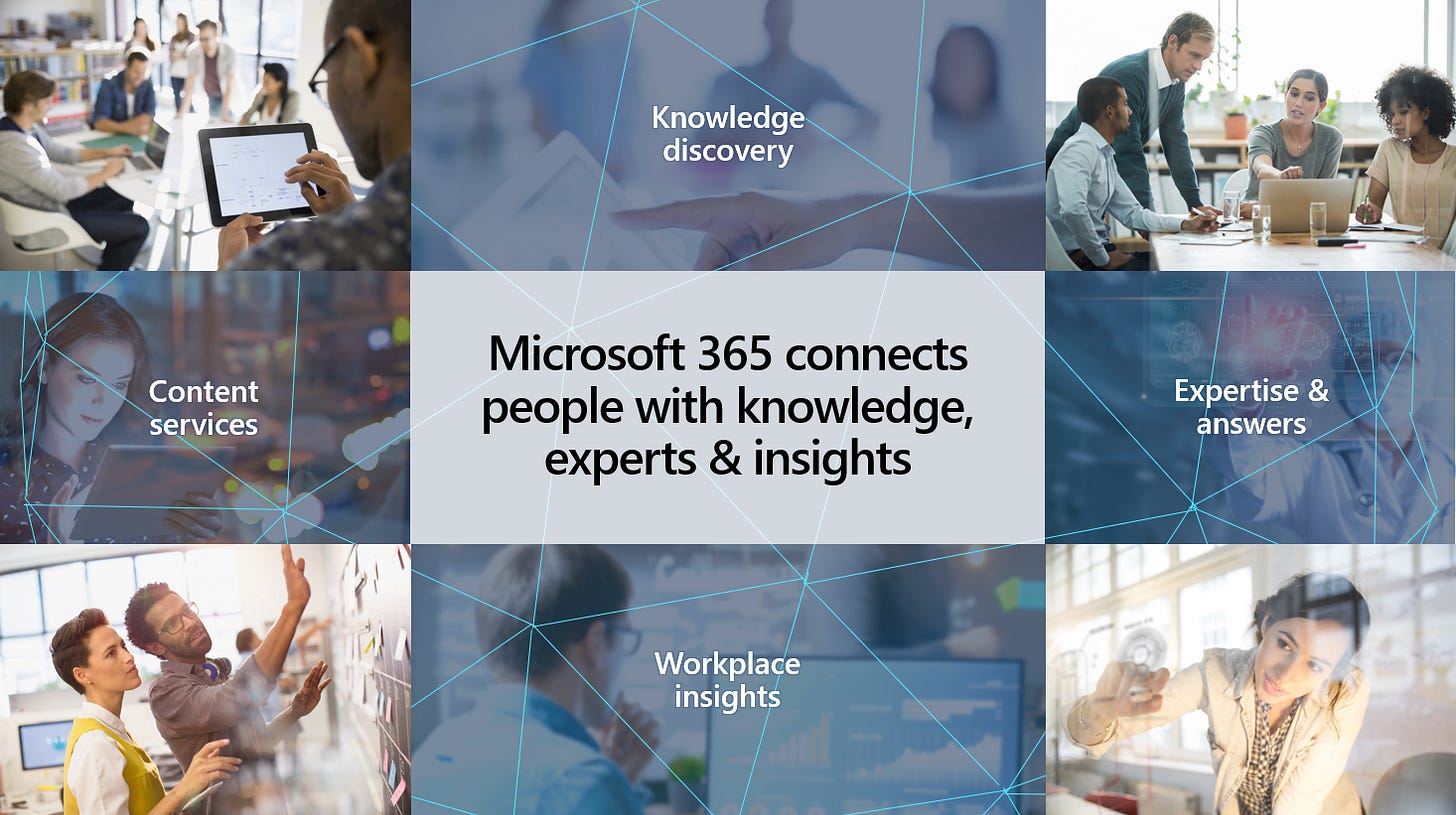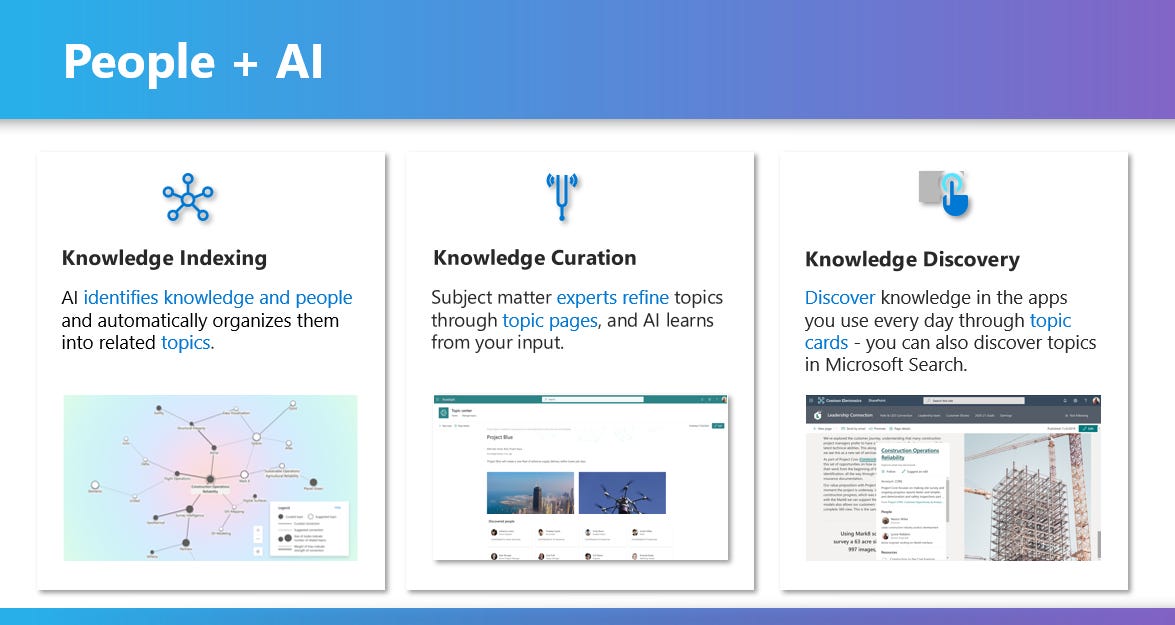That's a wrap. Now, what did we learn?
Adding knowledge to the intranet for the collective, future YOU
Hello Peer,
Let me start with a stolen phrase from the Microsoft Viva Topics launch, “Turn content into knowledge… (to) reason over your organization’s data.” That’s no small task. It takes discipline, planning and course correction. At the core of Topics is where AI meets human - where the knowledge handshake becomes a hug. Humans contributing makes all the difference.
As Microsoft prepared to bring Topics to general availability (GA), it got me thinking about two key knowledge content types; not the SharePoint kind, but what people can do to capture knowledge when it’s fresh.
This article highlights the value of exit interviews and postmortem meetings - two methods that harness best practices and unstructured knowledge from around the organization. The goal: convert all into reusable content before it moves out of reach.

Note: I’m not a knowledge management (KM) expert. I borrow sentences and phrases - to ensure accuracy of my intent - to explore knowledge, for knowledge’s sake based on things I’ve learned or have been asked to do along the way.
The exit interview is knowledge filled with pros and cons
I’m not a people manager. And as a product manager, I’ve at times temporarily managed others’ products during transition until a new hire joins the team. This flux is less flummoxing with a few “before you go” actions. The intent: retain what they know - the knowledge - and put it in place so it pays itself forward.
It’s a brain dump - an exit interview - before current clarity fades. Tactically, it’s a 1:1 sync plus content archiving — before they change roles or move on beyond the walls of Microsoft. My core product is SharePoint, and in transition over the years, I’ve transitioned OneDrive, Delve, Office 365 Video, and others. I did this mainly in the form of notes in OneNote, saved/moved documents and presentations, gathered links to the good stuff, and made many lists of who’s who. Pepper in a little document management and search, and it automatically gets added to the corpus of knowledge.
Now imagine this at scale, with structured exit interviews - a business process flow to fill out a survey, relocate files and folders, and meet with peers and managers to share openly. That then becomes the foundation of unstructured knowledge, captured, kept, discoverable. Add an additional AI layer to further organize and up-level for others when they need it most, with all content permissions intact of course.
Learn more | "5 Steps to Conducting a Exit Interview" by DP Taylor on the Blueprint from Motley Fool.
The postmortem teaches what to and not to do
Product marketing affords ongoing lessons learned - like Luke and Yoda training in the Dagobah system. Course correction is not always easy, and it’s nice to be in the know - knowing what lessons we can learn from. The try before the do, as Yoda might begrudgingly infer. After putting in a ton of work across many teams, it’s not uncommon for someone to schedule a post-mortem meeting, to ask the broader team what worked, what we’d do differently, and what might we take a hard pass on next time. With an honest growth mindset, knowledge points to better feet forward and being able to lift the X-wing fighter.
One example that comes to mind is Microsoft Ignite. It was the second time we held this event virtually due to the pandemic. On the first go around (the try) - with a ton of planning, people, and technology - we did OK, and there was much learned across the role of keynotes, length and number of breakout sessions, access to SMEs during AMAs, and more (note: not a single complaint about coffee :)) We got a flood of attendee feedback. This was poured over, analyzed, derived, inferred, picked at… with numerous post-mortem meetings across teams. The outcome, a better Ignite a few months later - with applied lessons learned and its own new flaws to take note of for next time.
Events of any scale bring a grab bag of information. You work with many others and learn from them. So, take note, take notes, review other’s notes, review and read all audience survey scores and verbatims (all of them) - and keep asking, “How’d that go?” The outcome is a silver lining woven into gold. Knowledge. Insights. Lessons learned. Make it all available and consumable. Heck, this might be you 6-12 months from now when reviewing it all when you get wrangled in to doing it all over again, except those things you wrote down as not to repeat.
Learn more about #MSFTViva Topics, from the employee experience
Since it was Viva Topics that spawned this knowledge exploration, I’ll wind down the article with a few nuggets on what it is. The practice of any of the above can be done with or without Topics. So long as you have a way to store, share and consume all that it captured, it can be used and viewed as knowledge. Topics then adds AI and intranet tools - with the result being value to employees to have that knowledge meet them where they are already working, requiring less manual lifting to get in the right place, or the right format.
I suggest starting with the “Introducing Microsoft Viva Topics“ blog, and I’ll visually highlight my favorite aspect: People + AI. I called it out once above, and the below graphic articulates more of what’s behind this blend of sentient being and being sentient.

Last, my colleague, Chris McNulty (who manages Topics) and I interviewed Jared Spataro - (CVP of Microsoft 365 marketing at Microsoft) on The Intrazone, to discover more about Microsoft Viva - including the top-level value of Viva Topics.
Have a listen: “Viva Las Microsoft”:
Visit the Microsoft Viva Topics resource center.
Final thoughts
As decision making shifts towards the edges of our organizations, we all need new ways to connect people with knowledge and experts. There is a top-down approach to apply preferred policies, processes, and technology. Where I see added value is at the team and individual level - the depth of the organization. The depths where the rate of change is at its greatest. And with it, the creation and churn of knowledge.
The wheel has already been invented. Spend your time building a better bike for its next rider.
Cheerios, Mark
P.S. (Pun Sharing)
Get your eye rolls ready to bake… one pun from me, @mkashman 🙄, and one from the world:



